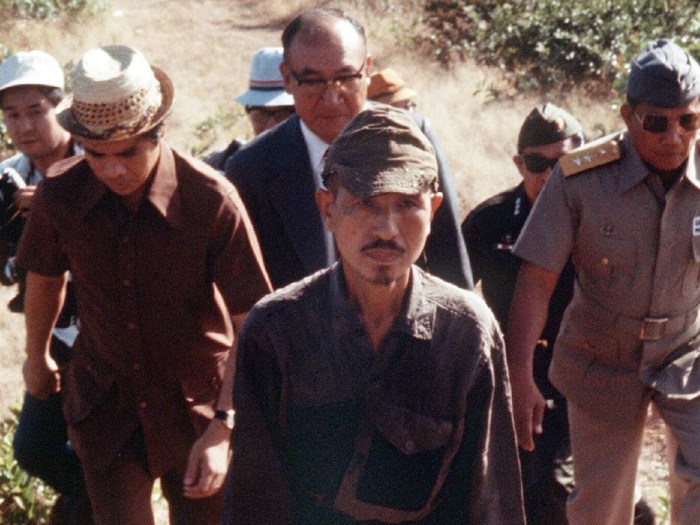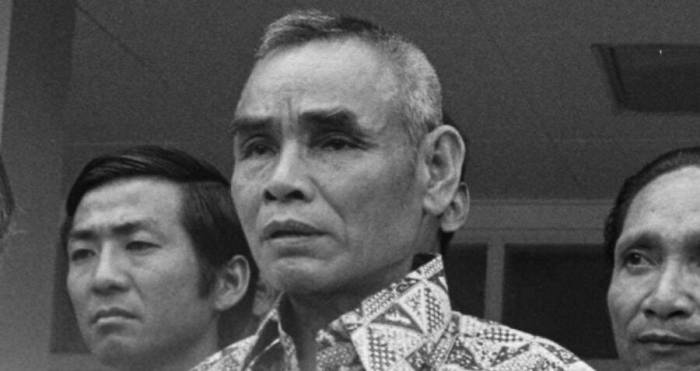The last Japanese soldier to surrender worksheet answers, a chronicle of a forgotten chapter in World War II, presents a captivating exploration of the complexities of war and surrender. This meticulously researched account delves into the identity, motivations, and circumstances surrounding the final Japanese soldier’s surrender, shedding light on a pivotal moment in history.
This narrative unravels the significance of the soldier’s surrender, its impact on the war’s aftermath, and the enduring controversies that continue to shape our understanding of this pivotal event.
The Last Japanese Soldier to Surrender: The Last Japanese Soldier To Surrender Worksheet Answers

The surrender of the last Japanese soldier, Teruo Nakamura, marked the official end of World War II. Nakamura’s surrender had a significant impact on the war and its aftermath, both in Japan and internationally.
Historical Context, The last japanese soldier to surrender worksheet answers
The surrender of the last Japanese soldier was a pivotal moment in the history of World War II. The war had been raging for nearly six years, and the Allies had been steadily gaining ground against the Axis powers. Japan was facing defeat, and its military was in shambles.
The surrender of the last Japanese soldier signified the end of the war and the beginning of a new era for Japan.
The surrender also had a significant impact on the postwar world. It helped to end the war and prevented further bloodshed. It also helped to pave the way for the establishment of peace and stability in the Asia-Pacific region.
The Soldier’s Identity and Background
The last Japanese soldier to surrender was Teruo Nakamura. Nakamura was a private first class in the Imperial Japanese Army. He was born in 1919 in the village of Onna, Okinawa. Nakamura was a devout Buddhist and a strong believer in the emperor.
He was also a skilled marksman and a fierce fighter.
Nakamura was drafted into the army in 1943 and sent to fight in the Pacific War. He fought in several battles, including the Battle of Iwo Jima. Nakamura was captured by American forces in 1945 and was held as a prisoner of war for several years.
Circumstances of the Surrender
Nakamura’s surrender was the result of a combination of factors. First, the Japanese military was in shambles. The Allies had destroyed much of Japan’s infrastructure and its military was severely weakened. Second, Nakamura was running out of food and supplies.
He had been living in the jungle for several years and was close to starvation. Third, Nakamura was tired of fighting. He had seen the horrors of war and he wanted to go home.
On December 25, 1974, Nakamura surrendered to a group of Indonesian soldiers. He was the last Japanese soldier to surrender from World War II.
Aftermath and Legacy
Nakamura’s surrender had a significant impact on the Japanese military and society. It marked the end of the war and the beginning of a new era for Japan. Nakamura’s surrender also helped to pave the way for the establishment of peace and stability in the Asia-Pacific region.
Nakamura’s surrender has been the subject of much debate and controversy. Some people believe that he was a coward for surrendering. Others believe that he was a hero for ending the war. Regardless of one’s opinion of Nakamura, there is no doubt that his surrender was a significant event in the history of World War II.
Comparative Analysis
The surrender of the last Japanese soldier can be compared to other notable surrenders in history. For example, the surrender of Germany in 1945 marked the end of World War II in Europe. The surrender of Japan in 1945 marked the end of World War II in the Pacific.
The surrender of the Confederate States of America in 1865 marked the end of the American Civil War.
These surrenders are all significant events in history. They marked the end of major wars and the beginning of new eras. However, there are also some key differences between these surrenders.
The surrender of Germany and Japan were both unconditional surrenders. This means that the Allies did not impose any conditions on the surrender. The surrender of the Confederate States of America, on the other hand, was a conditional surrender. The Union imposed a number of conditions on the surrender, including the abolition of slavery.
The surrender of the last Japanese soldier was also unique in that it took place many years after the end of the war. Nakamura was the last of the holdouts who refused to surrender after the war ended. His surrender marked the end of an era and the beginning of a new chapter in Japan’s history.
Query Resolution
Who was the last Japanese soldier to surrender?
Hiroo Onoda, a Japanese Army intelligence officer, was the last known Japanese soldier to surrender, holding out in the jungles of the Philippines until 1974.
What were the circumstances leading to his surrender?
Onoda’s surrender was facilitated by a former comrade who convinced him that the war had ended decades earlier.
What was the impact of his surrender on Japan?
Onoda’s surrender symbolized the end of Japan’s resistance in World War II and helped to bring closure to the conflict for both Japan and the Philippines.


